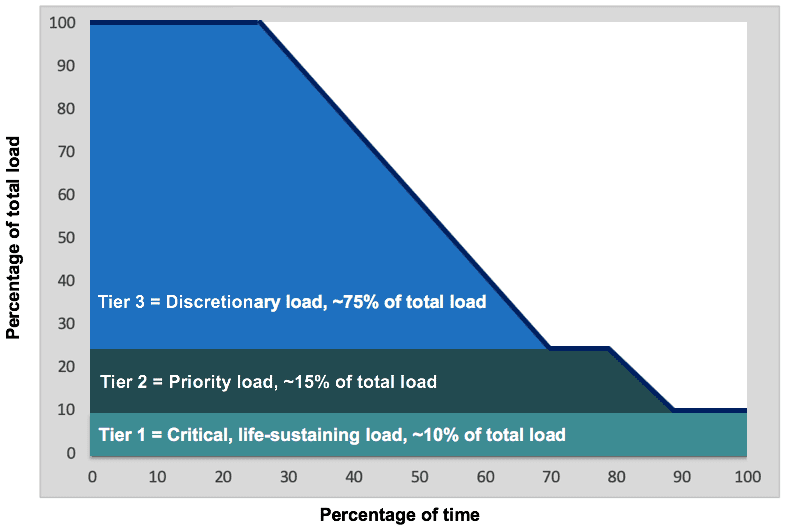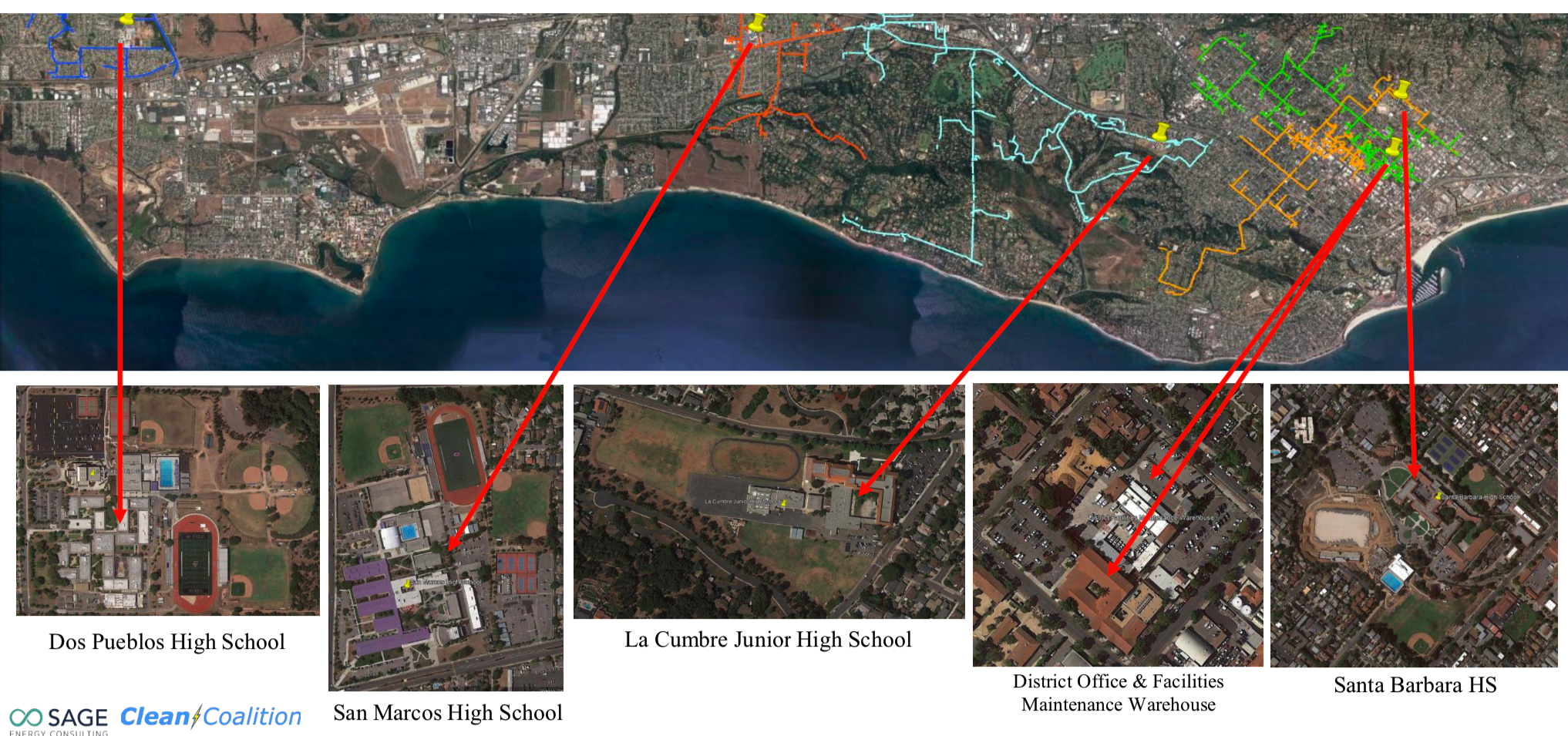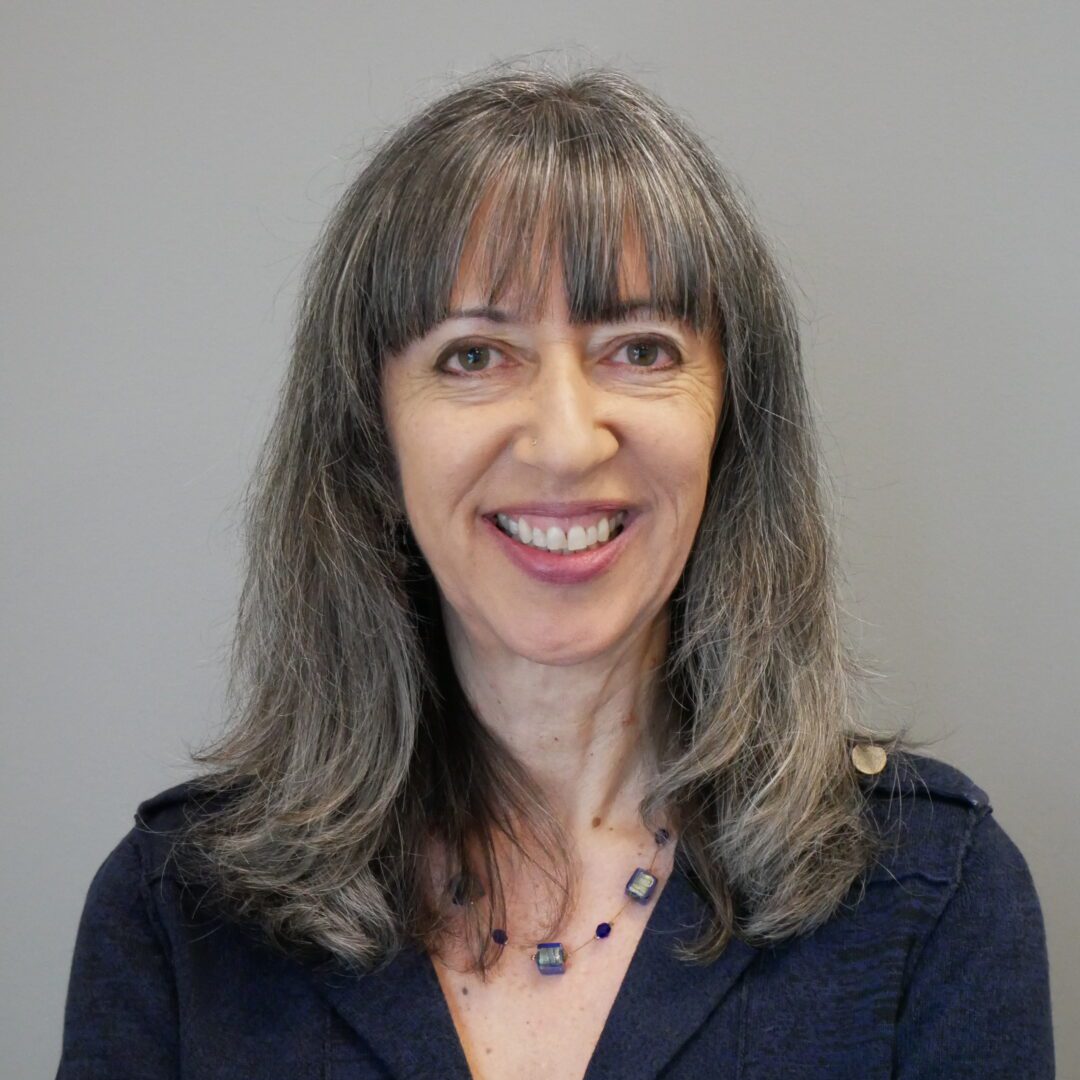
Press release: Santa Barbara Unified School District (SBUSD) Board unanimously approves moving forward with Solar Microgrids throughout the district
The Clean Coalition and Sage Energy Consulting facilitated a groundbreaking feasibility and RFP process that will save the SBUSD millions while providing almost equal value in resilience to the District for free
28 September 2020
NEWS RELEASE: Santa Barbara Unified School District (SBUSD) Board unanimously approves moving forward with Solar Microgrids throughout the district
The Clean Coalition and Sage Energy Consulting facilitated a groundbreaking feasibility and RFP process that will save the SBUSD millions while providing almost equal value in resilience to the District for free
SANTA BARBARA, CA – In a big win for clean local energy and resilience in the Santa Barbara region, the Santa Barbara Unified School District (SBUSD) Board unanimously voted last week to proceed with Solar Microgrid projects throughout the District, along with additional standalone solar projects.
For the Santa Barbara Unified Solar Plus Energy Resiliency Project, the Clean Coalition, a nonprofit organization, and Sage Energy Consulting completed feasibility studies for Solar Microgrid and standalone solar installations at 18 SBUSD sites. This was followed by designing and executing a state-of-the-art request for proposals (RFP) process for a 28-year fixed-rate power purchase agreement (PPA) for solar at 14 sites, with full Solar Microgrids at 6 of those sites.
As the best value from numerous excellent proposals submitted, Engie Services U.S. provided the winning bid to design, build, own, and operate all the projects. The Solar Microgrids will feature solar and energy storage that can provide indefinite resilience to the most critical electric loads, which include refrigeration, communications, and emergency staging. The rest of the loads will be maintained for a significant percentage of the time as well. The solar will be deployed in the form of solar parking canopies, and the benefiting parking lots will be staged for future deployments of electric vehicle charging infrastructure (EVCI).
In addition to millions of dollars in guaranteed bill savings through the fixed-rate PPA, and additional market opportunities that might arise from dispatchable solar energy, the SBUSD will enjoy millions of dollars in value from resilience benefits, for free:

“The SBUSD has shown impressive leadership in unanimously voting to move forward with this groundbreaking initiative,” said Craig Lewis, Executive Director of the Clean Coalition. “The associated Solar Microgrid specifications introduced significant innovations that guarantee resilience benefits to the District and are game-changing for the industry. Sage has been a tremendous partner in facilitating analytical, RFP, and contracting innovations. The SBUSD Solar Microgrids serve as a model that can easily be followed by school districts and other entities throughout the country, and well beyond.”
The value-of-resilience for the Solar Microgrids was secured via a highly innovative specification in the RFP, based on the Clean Coalition’s value-of-resilience (VOR123) methodology. The methodology is based on tiering electric loads into three tiers, which will be managed via automated functionality built into the Solar Microgrids:
- Tier 1: Mission-critical, life-sustaining loads that warrant 100% resilience – usually about 10% of a facility’s total load. At the SBUSD, Tier 1 loads are freezers and refrigerators. The RFP specifies that during an outage, these loads must be kept operational 100% of the time.
- Tier 2: Priority loads that should be maintained as long as doing so does not threaten the ability to maintain Tier 1 loads – usually about 15% of the total load. At the SBUSD, these are Main Distribution Frame facilities for communications services and primary Multi-Purpose Room type facilities for emergency response. The RFP specifies that these loads must be kept online approximately 80% of the time during outages.
- Tier 3: Discretionary loads that should be maintained only when doing so does not threaten Tier 1 and Tier 2 resilience – usually about 75% of the total load. At the SBUSD, these loads are anticipated to be kept online approximately 25% of the time during outages.

“This visionary initiative will result in a trifecta of economic, environmental, and resilience benefits to the District,” said SBUSD board president Laura Capps. “In addition, our schools with Solar Microgrids will have the ability to serve as places of refuge to the broader community, during grid outages of any duration. I am proud of the unanimous support that has been given to this effort across the District’s board, facilities staff, and former and current superintendents, as well as the support we’ve received from the community at large.”
The SBUSD is located in one of the most grid-vulnerable regions in California, the Goleta Load Pocket (GLP) – a 70-mile stretch of Southern California coastline from Point Conception to Lake Casitas, encompassing the cities of Goleta, Santa Barbara (including Montecito), and Carpinteria.

The area gets most of its power from just one set of transmission lines hung on the same transmission towers and routed through 40 miles of mountainous terrain that is highly prone to wildfires, mudslides, and earthquakes – making the GLP highly transmission-vulnerable.
“The District’s Solar Microgrids have been strategically spread throughout the Goleta Load Pocket to best serve the entire community during grid outages, including those resulting from high-impact disasters,” said Steve Vizzolini, SBUSD Director of Facilities & Modernization. “We will be positioned to support everything from emergency sheltering with food service to internet access and electronics charging stations.”

The District will now enter into contract negotiations with Engie, with contract approval expected in November and construction targeted for next summer.
About the Clean Coalition
The Clean Coalition is a nonprofit organization whose mission is to accelerate the transition to renewable energy and a modern grid through technical, policy, and project development expertise. The Clean Coalition drives policy innovation to remove barriers to procurement and interconnection of distributed energy resources (DER) – such as local renewables, energy storage, advanced inverters, and demand response – and we establish market mechanisms that realize the full potential of integrating these solutions. In addition to being active in numerous proceedings before state and federal agencies throughout the United States, the Clean Coalition collaborates with utilities, community choice aggregation agencies, municipalities, and other entities to create near-term deployment opportunities that prove the technical, economic, and resilience viability of local renewables and other DER.
Contact:
Rosana Francescato
Communications Director
Clean Coalition
rosana@clean-coalition.org
650-308-9046

